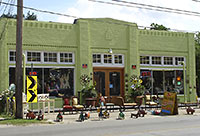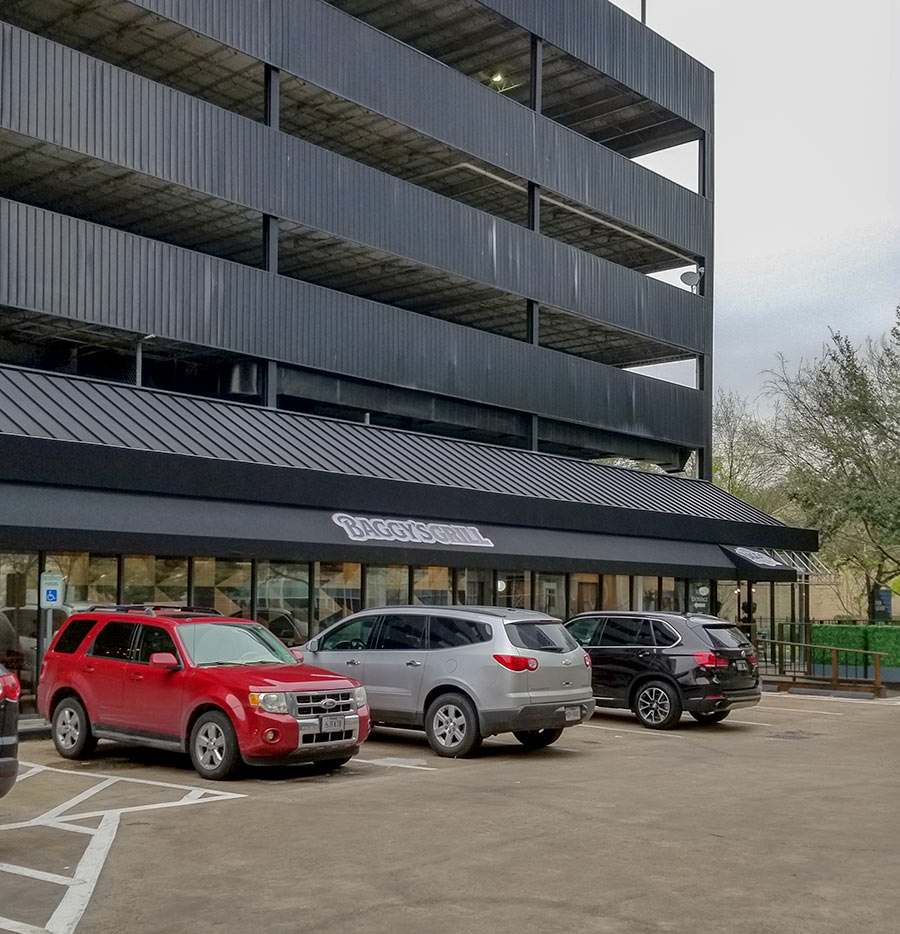KICKING OUT THE OLDIES ON WESTHEIMER  Just a few weeks after a fire took out one resale shop in Montrose, Culturemap reporter Whitney Radley has noticed that another, BJ Oldies and Antiques just a few doors down, is for lease. Radley seems to suspect that this old watch-your-step reliquary is being booted out for yet another new Westheimer restaurant. Whether the foodies are coming won’t be determined until August, though, when antiquarian owner Becky Pieniadz ups and leaves for her new location just down the road at 1726 Westheimer, joining those like-minded retailers next to Empire Café. Still, Pieniadz doesn’t seem thrilled about having to vacate the 8,600-sq.-ft. building where she’s been since 2008 and box all that %&$# up: “The last thing I wanted was to move out of here.” [Culturemap; previously on Swamplot] Photo: Flickr user emilycovey
Just a few weeks after a fire took out one resale shop in Montrose, Culturemap reporter Whitney Radley has noticed that another, BJ Oldies and Antiques just a few doors down, is for lease. Radley seems to suspect that this old watch-your-step reliquary is being booted out for yet another new Westheimer restaurant. Whether the foodies are coming won’t be determined until August, though, when antiquarian owner Becky Pieniadz ups and leaves for her new location just down the road at 1726 Westheimer, joining those like-minded retailers next to Empire Café. Still, Pieniadz doesn’t seem thrilled about having to vacate the 8,600-sq.-ft. building where she’s been since 2008 and box all that %&$# up: “The last thing I wanted was to move out of here.” [Culturemap; previously on Swamplot] Photo: Flickr user emilycovey





That pedestrian-friendly open air antique mall strip won’t endure the rapid new upscaling of Montrose. Hopefully a few of those antique buildings will.
Perhaps resale shop is not the highest and best use for land that clocks in north of $2MM an acre…
I’m sure there was a similar sentiment in SoHo in 1985 or so. I appreciate the charm of Montrose as well, but it’s bound to unfold.
I’m not as worked up about this one as I would be if it was further down the road. That place has only been there five years and was the Houston Area Women’s Center resale shop for decades before BJ Oldies moved in.
I, for one, will be glad to see all that polyglot of junk they wag out to the curb everyday moved out. Perhaps she will benefit from the synergy of being surrounded by other antique stores. Wasn’t the store near Empire before?
There’s a church just south of the current BJ’s building. In fact the church site might be adjacent to the building.
Is this building 300 feet from the church? Will any new tenants be able to serve alcohol?
“Antique” is French for “junk.”
@JT – You are right. BJ’s Oldies was previously in the space across from Empire Cafe. If I remember correctly, she left over a rent spat. Interesting that she is returning there.
The economics of these places fascinate me. Whats the markup on “Oldies and Antiques”? How much in daily sales do they gotta do to cover rent, utilities, insurance and all that stuff? How do you do sales projections?
One mans trash is another mans treasure..but you so called elitists would not know about trash!!!!lol
The fact that she sells all that new “colorful” metal yard art and those godawful gilded Indonesian “King’s chairs” is probably where her bread and butter comes from. There is not set mark up on vintage and antique pieces. Prices are set at whatever someone will pay and allows for wheeling and dealing. She does not deal in high end goods so I would guess she buys from estate sales and garage sales to procure most of her older pieces. Look at the building and the fact she has just a few employees. Her cost basis is pretty low. Her items are generally priced for fast turnover.
“Whats the markup on “Oldies and Antiquesâ€?”
A similar situation maybe; I had a mid-century Thorsen chair from the early 60s that I couldn’t sell last month on Craigslist for $40 until a dealer called and said he’d pay full price if I delivered it 8 miles away to his warehouse. I did and I saw on his website the same chairs going for $700.
This life cycle is repeated in many big cities in the US. Old original neighbohood declines as the suburbs emerge; artists, antique dealers, clubs/bars and other independent shops move in for the inexpensive space and hip vibe. Suburbs sprawl. Traffic congestion make the old original neighborhood’s location desireable. Young talented chefs move in for their first restaurnt and hit it big. More follow. Boutiques replace second hand shops. High end chains replace antique shops. Mixologists replace grizzled old bartenders. Established high end restaurants eye the neighborhood for an additional location. Eventually, the neighborhood is only recognizable by the architectural elements that were preserved.
” Eventually, the neighborhood is only recognizable by the architectural elements that were preserved.”
In other cities, architectural elements would be preserved (partly because consumers like that feeling of authenticity, even if it is ultimately skin deep). In Houston, not as much.
I noticed the other day the remodel permit lists the new name as “Home Biscuit.” Any idea on what this is going to be? They’ve been working hot and heavy on it the last few months.